Southern gateway to Cappadocia Population: 161,250
Old name: Nahita, Nekide (Arabic)
Market day: Thursday
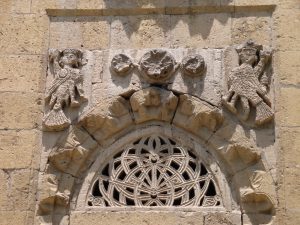 With a backdrop of the snow-capped Taurus Mountains, Niğde ought to be a stunningly beautiful town. Unfortunately the town planners have failed to cash in on their opportunity although the main square is much more attractive than it used to be.
With a backdrop of the snow-capped Taurus Mountains, Niğde ought to be a stunningly beautiful town. Unfortunately the town planners have failed to cash in on their opportunity although the main square is much more attractive than it used to be.
The main reason to come here is to see some fine old buildings dating back to the Middle Ages but Niğde also makes a great base for visits to the rock-cut monastery at nearby Eski Gümüşler and to the remains of ancient Tyana at Kemerhisar.
Backstory
Niğde lies at a strategic point on the road that runs up from the coast at Adana and crosses the Taurus Mountains via the Cilician Gates to reach Central Anatolia.
But it was the site of Tyana (Kemerhisar) rather than of modern Niğde that attracted the attention of the ancients. First settled in Hittite times, Tyana rose to importance under the Romans. During the Byzantine period, however, it was subject to constant raids by the Arabs and at some time during the 11th century the site seems to have been abandoned.
Its place in importance was at first shared equally with Bor and Niğde. However, today there is no doubt that it is Niğde, the provincial capital, that has gained the upper hand.
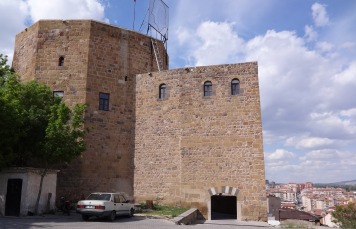 Around town
Around town
Nothing much is known about Niğde before the 11th century when it was occupied by the Selçuks. Several reminders of their dominance survive around town, including parts of the citadel which seems to have been completely remodelled during the reign of Alaeddin Keykubad I (d.1237). He it was who gave his name to the Alaeddin Cami inside the walls of the citadel which was built in 1223. Heavily restored, the mosque still boasts a finely carved entrance although its minaret is curiously stumpy and disappointing.
The Selçuks left one other magnificent monument which is easy to overlook both because it’s so much smaller and because it’s virtually hidden behind municipal buildings. This is the tomb of Hüdavend Hatun, the daughter of Rukeddin Kılıçarslan IV, who was buried here in 1332 beneath a veritable rash of tiny carved lions, double-headed eagles and stone flowers.
Like Tyana before it, Niğde took a regular battering from raiders and the medieval traveller Ibn Battuta reported that it was largely in ruins when he visited in 1333. Two years later, however, the Mongols seized the city and it was during the period of their supremacy that the town’s most interesting mosque, the Sungurbey Camii, was built.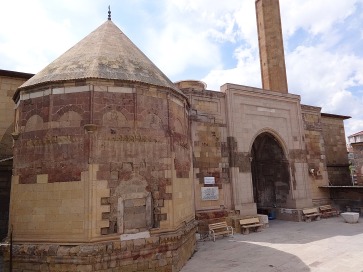
Today it bestrides a stone platform at the far end of a car park, a strangely low-lying building with carvings that include a Gothic-looking rose window and several falcons (sungur in Turkish), in reference to its founder. The mosque is accessed from the north side where a finely decorated entrance is just steps from the tomb of Sungurbey.
Most of its magnificent woodwork has found its way into the local museum, although two of the original doors are still perilously in situ. Pieces of the original inlaid wooden mimber are now incorporated into the mimber of the 18th-century Dışarı Cami.
A much less prominent Mongol monument is the Saruhan in the town centre. Built in 1357, it served as a small austere inn on the main Niğde to Kayseri caravan route, before becoming a government depot in Republican times. It now operates as a cafe-restaurant across the road from a small park.
Like the Selçuks, the Mongols were eventually overthrown, their place taken by the local Karamanoğlu dynasty whose lasting gift to the town was the magnificent Ak Medrese. This was built in 1409 for Alaeddin Ali Bey, who no doubt rode around town inspecting the surviving mosques before opting to pay for a building whose doorway would outstrip in exuberance anything that had gone before. It now serves as a cafe cum handicrafts sales outlet.
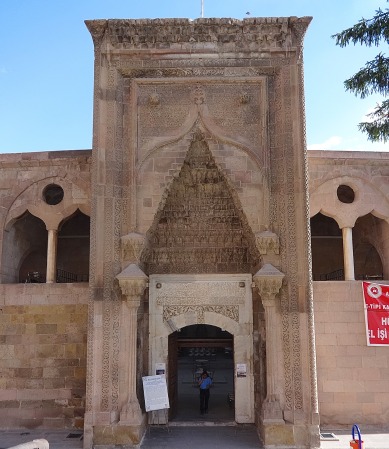 The Ottomans captured Niğde in 1467 and most of the other mosques date from their long period of domination. The most striking relic of their time in power is the 80-metre-long, windowless bedesten (market hall) situated right beside the Sungur Bey Cami and also inaccessible. Worth seeking out, too, is the 18th-century Kiğılı Cami in the bazaar whose pretty little stone bird-house is very popular with nesting sparrows.
The Ottomans captured Niğde in 1467 and most of the other mosques date from their long period of domination. The most striking relic of their time in power is the 80-metre-long, windowless bedesten (market hall) situated right beside the Sungur Bey Cami and also inaccessible. Worth seeking out, too, is the 18th-century Kiğılı Cami in the bazaar whose pretty little stone bird-house is very popular with nesting sparrows.
Dating back to 1902, the clocktower that dominates the citadel also forms part of the Ottoman legacy having been built, like many other examples, to celebrate Abdülhamid II’s 25th year as sultan.
In late Ottoman times Niğde had a large Christian population, most of whom lived in the Eski Saray Mahallesi, east of the Sungurbey Cami. Here stand the locked and vandalised remains of two huge 19th-century churches, one of them (Merkez/Prodromos Kilise, 1861) surrounded on three sides by a fine portico. If you can manage to get a peek through the windows you’ll see that the ceiling frescoes survive largely intact.
Also in the Eski Saray Mahallesi are the town’s last remaining stone houses, most of them derelict.
Niğde’s museum (closed Mondays) may not be large but it is very well presented with a fine reconstruction of one of the Chalcolithic houses excavated at Köşk Höyük, near Kemerhisar.
Most visitors, however, will be mesmerised by the four 10th or 11th-century mummies which form the museum’s gruesome centrepiece. One is the body of an adult female, perhaps recovered from the Yilanlı Kilisesi (Church with a Snake) in the Ihlara Valley, near Aksaray. Even more poignant are the remains of four tiny children still in their burial robes and bonnets which seem to have been excavated from the Çanlı Kilisesi at Akhisar, also near Aksaray. Some might think they are long overdue a return to their graves.
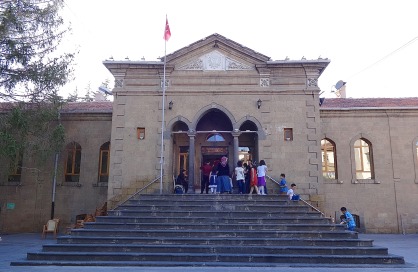
Eating and drinking
While Niğde is hardly a culinary hotspot it has plenty of straightforward lokantas and cheapy döner places. I also found my footsteps constantly drawing me back to the Park Cafe, a lovely shady tea garden right beside the Dışarı Cami.
Sleeping
Niğde has a fairly limited choice of hotels, none of them perfect. One other option might be to stay in the Öğretmen Evi (Teachers’ House), a grand building tucked up in an alley close to the main square.
Transport info
Niğde is frequently accessible by inter-city bus from Nevşehir or much less frequently from Adana.
The local bus station is still within walking distance of the town centre whereas the intercity bus station is not, so travelling by local bus from Nevşehir to Niğde and vice versa tends to make the most sense.
The local bus station is horrible, one of the grungiest places to wait for transport in the country. Some buses don’t even leave from it – the Ulukışla and Yeşilburç buses leave from different places in the town centre while Bor, Kemerhisar and Fertek buses can be picked up from in front of it. 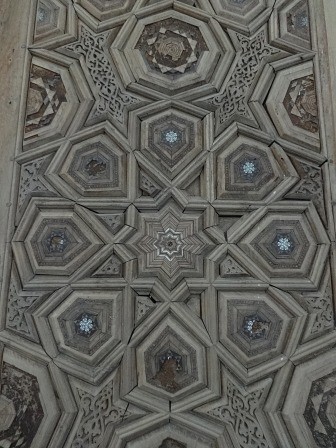 Inlaid panel from original mimber of Sungurbey Cami, now in Dışarı Cami
Inlaid panel from original mimber of Sungurbey Cami, now in Dışarı Cami
Day trip destinations
There are lots of places to visit in the vicinity of Niğde. The most obvious places to go are Eski Gümüşler and Kemerhisar but many villages withing a few kilometres of the town centre also repay a short visit.
Aladağları Milli Parkı (National Park)

